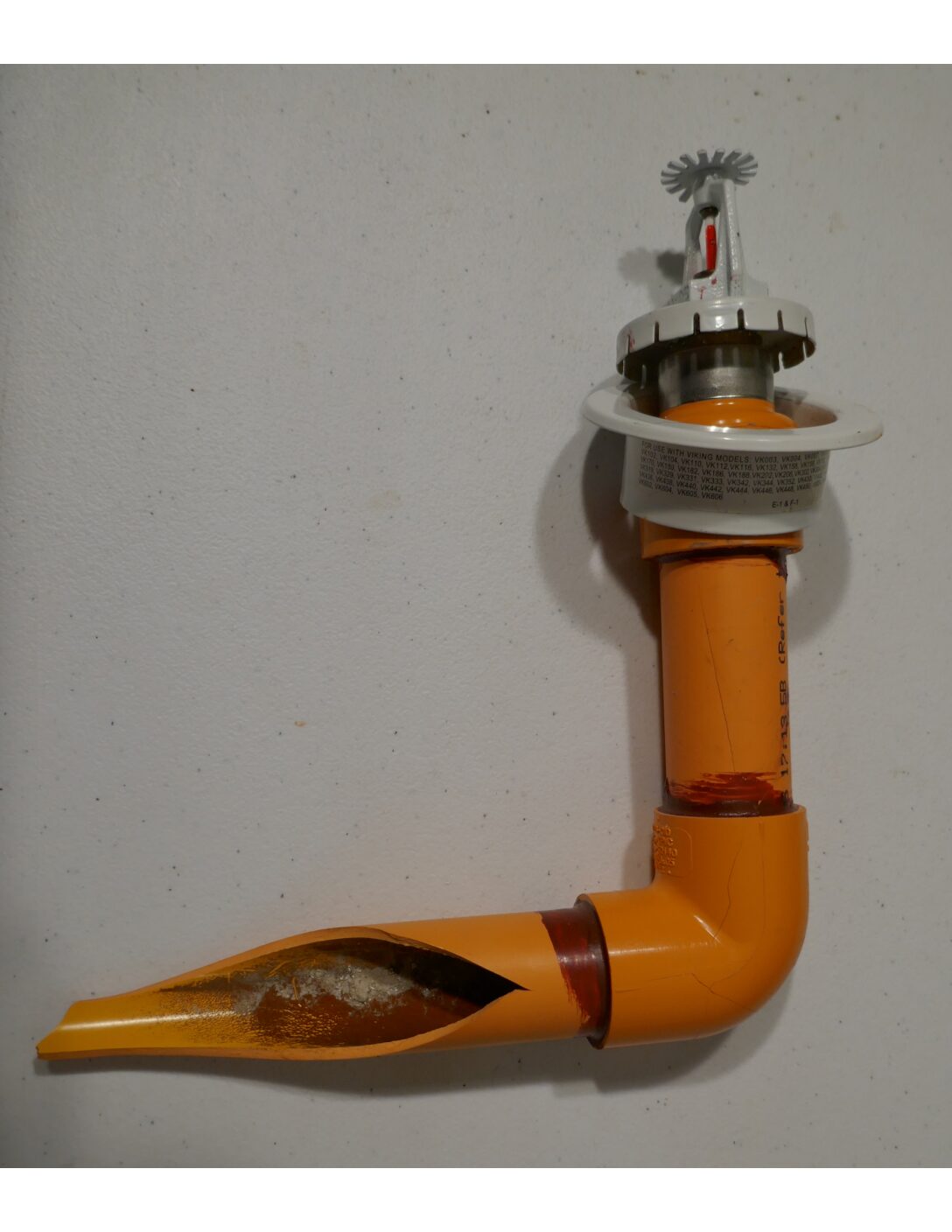As a property owner, building manager, or real estate professional, understanding your building’s fire sprinkler system is essential for both safety and financial protection. CPVC (chlorinated polyvinyl chloride) sprinkler pipes have become the standard in many multi-family residential buildings due to their cost-effectiveness and reliability. However, these systems require informed management to prevent costly failures and ensure optimal performance.
System Identification and Lifespan
CPVC sprinkler pipes are easily recognizable by their distinctive bright orange color and slightly thinner wall construction compared to standard white CPVC plumbing pipes. These systems cannot be mixed with white CPVC pipe materials, for example. When properly installed and maintained, CPVC sprinkler systems are designed to provide up to 50 years of reliable service, making them a sound long-term investment for property owners.
Critical Vulnerabilities Every Property Manager Should Know
Chemical Exposure Risks
The most significant threat to CPVC systems comes from incompatible chemical exposure. Property managers must be particularly vigilant about cleaning products containing quaternary ammonium compounds (quats), which became widely used during the COVID-19 pandemic for their effective viral disinfection properties, and more commonly used in mold removal and mitigation applications. While these products are safe for humans and animals, they can cause CPVC pipes to crack over time.
High-risk substances include:
- Cleaning products with quaternary ammonium compounds
- Petroleum-based oils and greases
- Certain firestop caulks and foams
- Plasticizers found in electrical cables and gaskets
- Some thread sealants
In general, CPVC is a hydrocarbon with affinity toward other hydrocarbons. The insidious nature of chemical damage means that failures may not manifest for years after exposure, making prevention the most cost-effective strategy.
Installation Quality Impact
Poor workmanship during installation creates long-term liability for property owners. Critical installation factors include proper solvent cement application, adequate curing time, correct pipe support spacing, and avoiding mechanical stress during installation1. The complex nature of solvent-cement application requires experienced contractors who understand the precise timing and techniques required for reliable joints.
Common installation defects that lead to future failures:
- Incorrect or excessive solvent cement application
- Insufficient curing time before system activation
- Improper pipe support and spacing
- Cross-threading or forced connections
- Mechanical stress from tight hangers
Freeze Damage: A Misunderstood Risk
Freeze failures can occur far from where the pipe is frozen. Contrary to common belief, freeze damage in CPVC systems typically results not from water expansion radially within the pipe. Water expands only 10% when frozen which CPVC can easily accommodate across the diameter of the pipe. The danger is where 10% expansion is applied linearly as ice plugs grow in connected iron pipes. This hydraulic pressure can exceed the CPVC’s capacity by many times, causing failures far from the actual freeze location.
High-risk areas requiring attention:
- Unheated attics and crawl spaces
- Exterior wall penetrations
- Mechanical rooms with inadequate heating
- Areas with inconsistent temperature control
- Super freeze whether events
Environmental Stress Cracking: The Hidden Threat
Environmental stress cracking (ESC) represents a particularly concerning failure mode where physical stress combines with chemical exposure to create progressive crack development. This process can take years to become visible, making early detection challenging. Manufacturing stresses inherent in CPVC fittings can compound this issue when combined with other stress factors.
Proactive Management Strategies
Maintenance Protocols
Property managers should implement regular inspection schedules focusing on visible signs of system distress, including frequent leaks, visible cracks, discoloration, or areas where pipes feel soft or brittle. Systems approaching 30 years of age require increased monitoring frequency with periodic professional assessment or sampling.
Documentation Requirements
Maintaining comprehensive records of all repairs, chemical products used in proximity to sprinkler systems, and maintenance activities enables early problem identification and supports warranty claims or insurance issues. All failed pieces should be preserved for future analysis. Pipe removed for any reason should be preserved for later investigations if necessary
Contractor Selection
Given the specialized knowledge required for CPVC installation and maintenance, property owners should prioritize contractors with demonstrated experience in CPVC sprinkler systems who understand the material’s unique requirements and potential failure modes1.
Financial Implications for Property Owners
Understanding CPVC system vulnerabilities helps property owners make informed decisions about avoiding failures, maintenance budgets, insurance coverage, and long-term capital planning. Early identification of potential issues through proper maintenance protocols can prevent catastrophic failures that result in significant property damage, business interruption, and potential liability exposure.
The 50-year expected lifespan of properly maintained CPVC systems represents substantial value, but this longevity depends entirely on avoiding the chemical, installation, and environmental factors that can compromise system integrity. For real estate professionals, this knowledge enables accurate property assessments and appropriate disclosure of system conditions to potential buyers or tenants.

